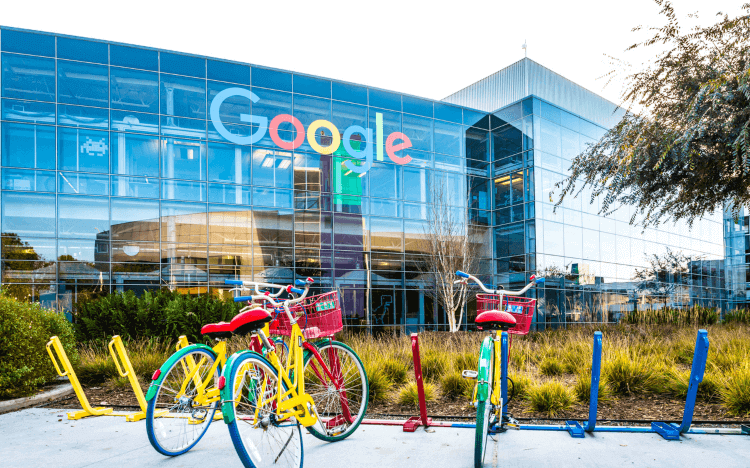Companies that still haven’t decided whether to implement workplace well-being initiatives should look at the world’s top employee assistance programs (EAP). Industry-leading EAPs can help HR managers and well-being advisors to decide if such programs are a worthwhile investment.
After all, employee assistance programs positively contribute to workers’ physical and mental health, benefiting organizations through reduced absence, enhanced productivity, and lower staff turnover.
That said, many companies are still reluctant to implement such programs, but it’s easy to see why. Smaller organizations are concerned about the costs and logistics; others—don’t know how best to design their EAPs or what employee benefits to prioritize.
Regardless of the perceived barriers, one thing is clear—the world’s major companies all have a type of employee assistance program.
In this article, we’ll delve into what makes these top employee assistance programs successful so you can make an informed decision about choosing and designing the best EAP for a healthy and thriving workforce.
Successful EAP Examples: What Do They Have in Common
Data by Statista reveals that the global value of the corporate wellness market is projected to reach 93.3 billion U.S. dollars by 2028, a 72% increase compared to 2021.
Yet, not all employee assistance programs are good or, shall we say, in line with the needs of today’s talent teams. Traditional EAPs can be reactive rather than proactive and lack effectiveness due to poor design.
But it’s up to employers to overcome such barriers and ensure their staff’s well-being at work and beyond. Large global companies have long recognized the value of EAPs and have adapted them to fit the needs of today’s talent. The top employee assistance programs do have underlying similarities—we examine them below.
They’re an Integral Part of the Company
Put simply, EAPs shouldn’t be just another bullet point on online job advertisements. According to the McKinsey study, 59% of employees worldwide reported at least one mental health challenge in 2022. This means we can no longer view “overall health” without paying attention to workers’ emotional well-being.
Employee well-being must be normalized and embedded into your company culture and what you represent as a business. This comes not only from the top-down but also through well-defined employee benefit policies.
They Are Adaptive
Top employee assistance programs don’t ever come to a screeching halt—they evolve with time. Companies simply cannot ignore what’s happening around them. The Covid-19 pandemic was a great example of how important it is to explore alternative EAP models or tweak the existing ones.
Organizations that fail to adapt face challenges in the long run. For example, a study by PwC shows that 57% of the Asia Pacific workforce are unhappy with their job and are prepared to switch employers. Despite seismic shifts, region’s organizations do little to tackle skill shortages, with just 36% of employees reporting that their employers support their physical and emotional well-being.
Therefore, companies that want to maximize the effectiveness of EAPs must monitor the external environment while keeping a tab on how often their workforce uses these services. Conducting surveys to gauge employee sentiment helps companies create a winning employee assistance program.
They Are Inclusive and Accessible
Mental health issues put the onus on an employer to create an inclusive and accessible employee assistance program that is personalized to meet the needs of all employees, their families, and dependents.
Top employee assistance programs have a variety of options when it comes to service provision. While traditional therapy may be ideal for certain workers, others may benefit more from coaching sessions or a mental health app with 24/7 access to beneficial resources for self-care or group counseling.
Five Top Employee Assistance Programs And What You Can Learn
Now that we’ve covered the fundamentals, here are some of the best employee assistance programs to get inspired.
1. Microsoft CARES
Microsoft, one of the longest-standing technology giants, takes great pride in investing heavily in its employees. The organization is a fantastic EAP example in which employees’ well-being is ensured in every aspect.
The technology multinational’s mission is “empowering our people” at work and beyond. To meet this goal, Microsoft offers comprehensive employee benefits that include the following:
- Investment in physical, emotional, and financial well-being;
- Support for diverse families;
- Flexible leave for new parents, carers, and those grieving a loss;
- Extensive personal and professional development opportunities;
- Donation matching and time off work to volunteer.
However, Microsoft’s flagship employee assistance program, CARES, makes the company stand out from the rest. Through Microsoft CARES, employees can access a wide range of services, including confidential counseling to assist them and their qualifying dependents in coping with life’s obstacles and stress-management strategies.
Microsoft CARES EAP is a highly accessible program catered to each employee group’s different needs and preferred channels. The company provides 24/7 online counseling through a secure website, telephone appointments, face-to-face sessions, and a mental health app.
2. Google’s EAP Focused On Employees’ Mental Health
Google is another company that spearheads the employee well-being game. Much like Microsoft, Google boasts one of the top employee assistance programs, missioned to keep its workforce happy and healthy. After all, the company believes that people are what makes Google.
Being a technology business, Google understands that retaining top talent is more cost-effective than constantly recruiting. And this is what drives its efforts in creating a comprehensive EAP program, which encompasses benefits to Googlers and their families.
Here are some of the employee benefits that the company offers:
- Health and wellness benefits that extend to family members;
- Confidential counseling and support services;
- Mental health apps;
- Workplace modifications for employees with physical or mental health issues.
Most importantly, what makes Google’s EAP example an excellent case study is that the company uses hard data and employee feedback to shape its approach to well-being.
Research shows that employees with mental health concerns are 4x more likely to say that their employer never asked them for feedback or input. Google recognizes that and perfectly leverages its feedback-rich culture to instill trust and open up the dialogue within the company.
3. Amazon
Amazon, a pioneer in e-commerce, also earns a spot on the list of top employee assistance programs. With around 1.5 million people working for the company worldwide, designing an EAP that genuinely works for everyone is challenging.
Occasionally under scrutiny, Amazon has gone above and beyond to normalize stigmatized conversations around mental health issues in the workplace. Its global EAP program includes a vast array of benefits, some of which include:
- Five free counseling sessions per year;
- Mental health coaching and self-guided programs;
- 24/7 access to an app designed for self-guided well-being routine;
- Support for employees’ children suffering from mental health issues;
- Community and peer support services.
Amazon’s operations span over half a hundred countries, yet the company strives to ensure baseline access to its mental health and workplace well-being programs.
4. Samsung Electronics
Headquartered in South Korea but known for its electronics and technology all around the globe, Samsung acknowledges that its success is based on the collective efforts of every employee in the company. It takes a holistic approach to support employees on all fronts, from physical and mental health to financial wellness.
It offers a top-rated benefits package with comprehensive medical coverage, including dental, vision, and telehealth services. Meanwhile, Samsung’s employee assistance program provides world-class counseling services to employees and their families through its extensive health network.
Samsung’s EAP hasn’t gone unnoticed. In 2021, Samsung received an award for its comprehensive employee health and wellness plan at Benefits Canada’s Workplace Benefits Awards. The organization is able to establish a healthy working environment and keep its voluntary turnover rate as low as 5%, thanks to its investment in well-being programs and the continuous gathering of employee feedback.
5. DBS Bank
DBS bank is a multinational banking and financial services corporation based in Singapore with as many as 33,000 employees. It’s also an excellent example of an adaptive EAP model, especially during moments of crisis.
A study of 15 Asian countries conducted by McKinsey discovered that approximately one in four employees reported signs of burnout due to the pandemic, increased isolation, and job uncertainty.
But in the light of mental-health-related challenges and a turbulent environment, DBS has responded by launching the TOGETHER movement to keep employee morale high. DBS showed its commitment to its employees during these trying times with the breadth and depth of its employee care and engagement initiatives.
The holistic programs centered on mental health were rolled out to combat the potential for burnout and to address employees’ physical, emotional, and psychological well-being.
Aside from its proactive initiatives, the bank strives to provide a place where all its employees feel appreciated, recognizing that every employee is different and has individual needs. DBS aims to ensure that its entire workforce is in excellent mental and spiritual health.
Summing Up
Making a business case for an employee assistance program is essential, no matter the size of your organization. Take these top employee assistance programs as a great source of inspiration for your own employee well-being strategy, and start acting now!
At MindFi, we assist businesses in providing their employees with 1:1 therapy bookings, group therapy and sharing sessions, and self-help resources as part of a customized employee assistance program—all through a single mobile app.
Request a free demo with MindFi today to begin exploring powerful well-being services.
FAQs About Employee Assistance programs
What is the main aim of an employee assistance program?
The goal of EAPs is to assist employees in recognizing and resolving well-being and emotional problems, whether or not they are work-related. Employee assistance programs are designed to promote a positive working environment and help workers to overcome challenges, ultimately boosting their performance at work and improving their home life.
How do companies benefit from having an employee assistance program?
Companies that invest in employee assistance programs can vastly improve their staff’s physical health and emotional well-being. As a result, happier employees are more engaged and productive and less likely to leave the company or report sick. Having a healthy and thriving workforce provides long-term savings for organizations as they don’t have to recruit new employees constantly.
What companies offer leading employee assistance programs?
Almost every Fortune 500 company has an employee assistance program (EAP). However, Microsoft, Google, Amazon, Samsung, and DBS are among the greatest EAPs in the world, offering comprehensive physical, financial, mental, and emotional benefits to employees and their immediate family members.














